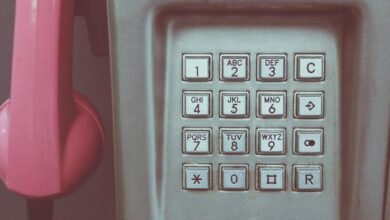Who Called Me From 6125477384, 6125681561, 6125945072, 6126075137, 6126077999, and 6128155871? Verify Now

Numerous individuals have reported receiving calls from the numbers 6125477384, 6125681561, 6125945072, 6126075137, 6126077999, and 6128155871. These calls may originate from telemarketers or scammers utilizing caller ID manipulation. It is crucial to assess the legitimacy of these numbers to safeguard personal information. Understanding the origins and common tactics associated with such numbers can provide clarity. What measures can one take to avoid falling victim to these potential threats?
Understanding the Caller ID: Origins of the Numbers
Caller ID, a feature that has become ubiquitous in modern telecommunications, originates from a system designed to relay the telephone number of an incoming call to the recipient’s device.
The caller ID history reveals an evolution in number formats, adapting to various telecommunications standards.
Initially simple, today’s formats accommodate international dialing, enhancing user autonomy and enabling informed decisions about incoming communications while fostering a sense of security.
Common Scams Associated With These Numbers
Scammers often exploit caller ID technology to deceive individuals and manipulate their responses.
Common scams associated with the numbers include phishing attempts and fraudulent solicitations, leveraging urgency to provoke hasty decisions.
Recognizing scam identification techniques is crucial, as these calls often present red flags such as unsolicited requests for personal information or payment.
Awareness of these tactics can empower individuals to protect themselves effectively.
How to Protect Yourself From Unwanted Calls
Although unwanted calls can be a pervasive nuisance, individuals can implement several strategies to mitigate their impact effectively.
Utilizing call blocking features provided by mobile carriers and smartphones can significantly reduce interruptions. Additionally, adjusting privacy settings to limit personal information exposure can deter unsolicited communications.
Conclusion
In the labyrinth of modern communication, the shadows of deceit often lurk behind seemingly innocuous numbers. As the digital age blurs the lines of trust, vigilance remains paramount. By scrutinizing the origins of calls from 6125477384, 6125681561, and their counterparts, individuals can shield themselves from potential scams. Empowering oneself with knowledge transforms uncertainty into defense, allowing one to navigate the treacherous waters of telecommunication with confidence and clarity. Awareness is the beacon guiding the way to safety.




